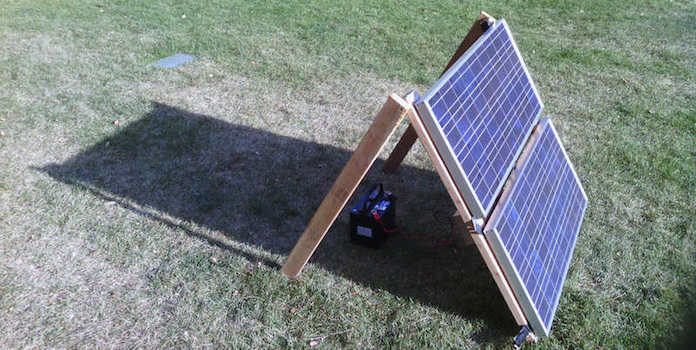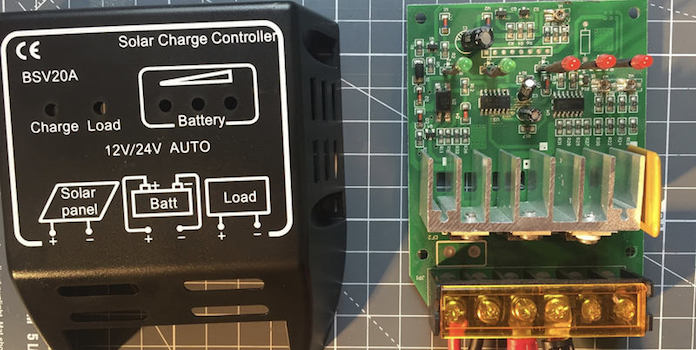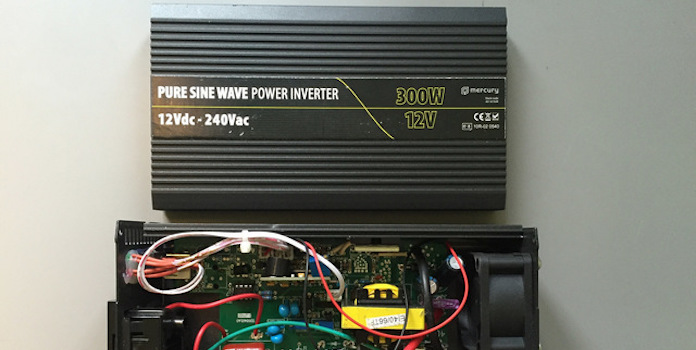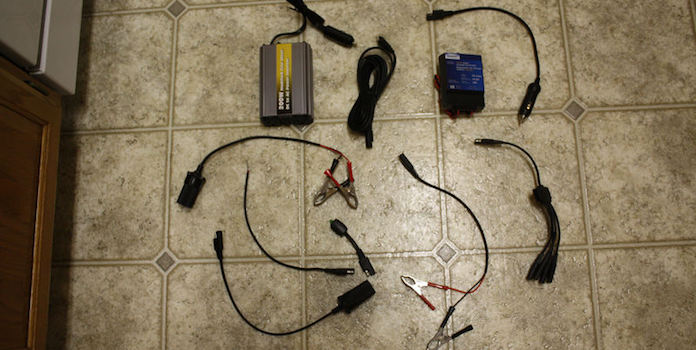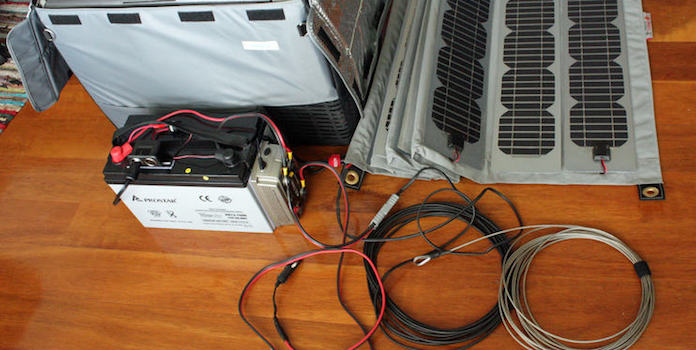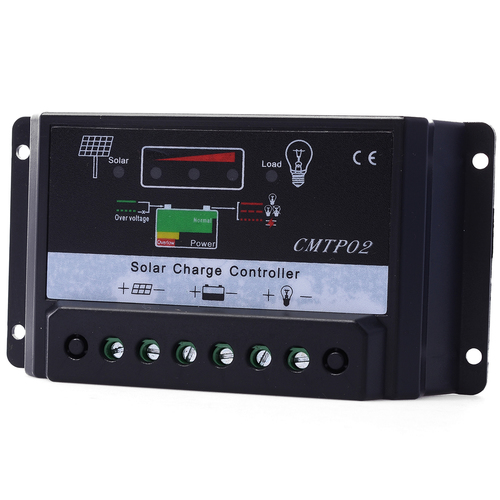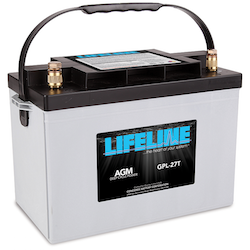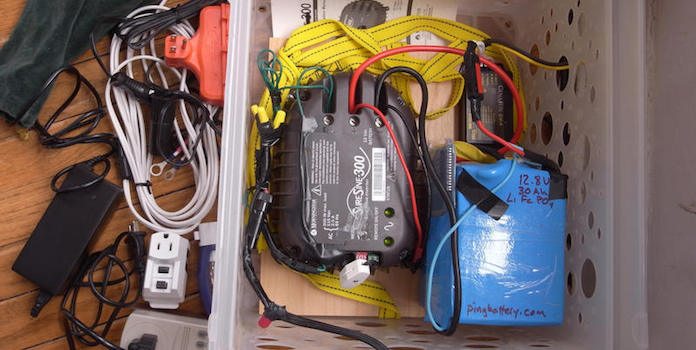What is Ideal for a Small Solar Power System: Kits or DIY?
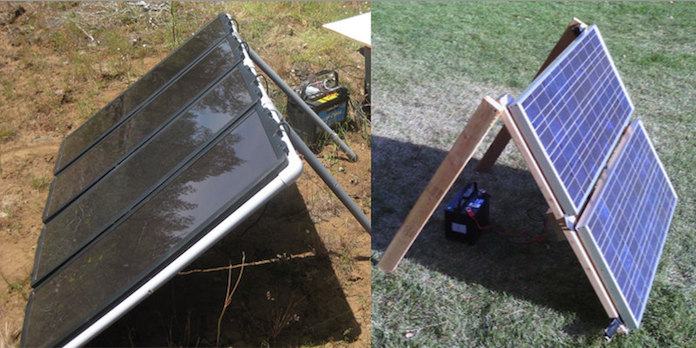
Small solar power systems can charge your gadgets while traveling
Are you drawn to the convenience of solar panels? Does the idea of taking a solar panel with you when you go camping, tailgating, or traveling to charge up all your gadgetry whenever you want appeal to you? If you’ve thought about buying a small solar power system but don’t know exactly where to start, we’ve got you covered!
This article isn’t about solar designed to power a house or cabin. We’re also not talking about tiny solar panels that can only charge your phone when the sun is out. You know the ones – those little solar panels you can clip to your backpack.
No, we’re talking about a solar system right in between those two. Systems that are small and portable, but have a battery and can charge your phone, run your lights, and charge your laptop indefinitely. Maybe you want to connect it to your RV or have an easy setup for your power supply while you’re out tailgating.
Whatever you’re going to do with your solar system, you’ve got a myriad of options available. You can buy premade kits that are convenient but expensive. There are semi-kits that you’ll need to add on to. Lastly, there’s full-on DIY for the handy ones out there. We look at them all below. Take your pick!
(If you’re looking for info on larger off-grid kits (400 watt systems), take a look at our article What are the Best Solar Panel Kits? For info on house-sized off-grid systems, read over The Basics of Off-Grid Solar.)
Basic components of a small solar power system
Before we look at the different options for small solar power systems, let’s get an idea of the basic components of any solar installation.
Small solar power systems can either be a permanent addition to a cabin, RV, or other structure or designed to be transportable so you can take it with you. In either situation, there are some basic building blocks that you’ll need that are common to all off-grid solar systems.
Solar panels
Obviously, you’ll need a solar panel. For this article, we’re focusing on 100-watt panels, as they are extremely common for small solar setups. These panels are typically around 4’ x 2’ and produce – you guessed it – 100 watts of electricity in perfect weather. 50 watt and 150 watt panels are fairly common as well.
Before choosing a solar panel, you need to think about how much electricity you’ll need to keep your batteries charged up. A 100-watt panel will charge your batteries slower than a 200-watt panel.
If your system will be permanently affixed to a roof or other place, also don’t forget the mounting hardware! Your panels can be installed flat against the roof or with adjustable hardware so you can position the panels directly in line with available sunlight, thereby providing more electricity.
100-watt solar panels are widely available online and can be had for $100 to $150 pretty easily.
Battery
Your battery is like the heart of your solar system: it stores electricity for when it’s needed. There are many different kinds of batteries out there, but you’ll likely want a deep cycle, sealed battery for a small solar power system. These are cost-effective (compared to more expensive lithium-ion batteries) and safe to move around. When you’re planning your system, don’t forget that batteries are heavy! 60 to 90 pounds is pretty standard for a deep cycle battery.
The size of the solar battery is measured in amp-hours (AH). How many AH you need depends on your electric usage. If you use a lot of electricity, you’ll need a bigger battery. For a little help on how to size your batteries, read our article How to Make a DIY Battery Bank for Your Solar Panels. For more info on battery basics, check out How to Store Solar Energy with a Solar Battery.
A battery can get quite expensive, with costs depending on both the brand you choose and size. Expect to pay a couple hundred bucks or more for a 100AH battery.
Charge controller
Batteries are quite expensive, but they can also be damaged fairly easily if they’re overcharged. Charge controllers regulate the amount of electricity that goes from the solar panel to the battery. If the battery is in danger of overcharging, the charge controller cuts off all the electricity going to the battery, hopefully prolonging its life and performance.
Charge controllers can be as cheap or expensive as you want, but typically range from $20 to a couple hundred dollars.
Inverter
The inverter changes the electricity from the direct current (DC) produced by the solar panels to alternating current (AC) used by our electrical gadgets. If you want to charge your phone or laptop, run a blender, or anything else like this, you’ll need an inverter.
Inverters are sized based on how much electricity you’ll use at one time. A portable hair dryer can use 1200 watts of electricity at once, so if you plan on using one, you’ll also need an inverter that can produce 1200 watts of power (and don’t get confused about your solar panel only producing 100 watts – your hair dryer is pulling electricity from your battery, which can store and handle more electricity than what you solar panel is currently producing).
Are you going to be charging your laptop (which needs 50 watts) at the same time as drying your hair? Then you’ll need an inverter that can cover 1250 watts of power. See how it works?
Inverters range from $100 for a cheap 1200 or 1500 watt inverter to hundreds of dollars for a more high-quality version.
Wires and fuses
You’ll also need wires to connect your solar panels to your charge controller, the charge controller to your battery, and battery to your inverter. These wires also need fuses, which protect the wires by ‘blowing’ if the electrical current gets too high.
The size of the wire and fuses depend on the size of the solar installation, but with a small system, you won’t need much and can probably get away with $50 or less invested.
#1 Complete kits for small solar power systems
Now that’s we’ve gone over the basics, let’s delve into your options.
Your first option is also the most expensive. If you want a small, portable solar power system and don’t care about cost, check out all-inclusive kits. These are ultra-convenient and come with absolutely everything you need to start producing and storing solar electricity. Of course, you’ll pay a premium for this ease.
Goal Zero has made a name for itself manufacturing high-quality, ultra-portable solar power systems. They are lightweight, attractive, and designed to take with you. Their 100-watt kit includes everything you need, including a 132 amp-hour lithium-ion battery (nice!) and a 1500 watt inverter. The inverter and battery are combined into one handsome unit with 12-volt outputs, AC wall outlets, and USB outlets.
Throw it in the back of your car and you can take it wherever. When you get to your destination, all you need to do is prop up your solar panel in the sun and you are good to go.
This thing is designed to be easy – just buy and start using it. Keep in mind, though, that you are certainly paying for it. The kit costs a whopping $2,374! Broken down, that’s $374.95 for the solar panel and $1,999.99 for the battery-inverter combo.
Don’t have that kind of cash? Piece your own together!
#2 Kits that you complete yourself (half DIY)
Pretty much all of the 100-watt solar kits available on Amazon or other online retailers come with the solar panel, charge controller, mounting brackets, and wiring from the panel to the charge controller. After you purchase the kit, you’ll have to the supply the inverter, battery, fuses, and all additional wiring separately.
These kits are a good compromise between the Goal Zero and hodgepodging your own system together. There are many companies out there making small 100 watt kits, including Renogy, Grape Solar, WindyNation, and Eco-Worthy.
Kits like these typically range from $150 to $300. How much does this set-up cost in total, after adding in the inverter, batteries, and additional wiring? Let’s find out!
Here’s a quick example of costs to build a solar system with one of these half-kits:
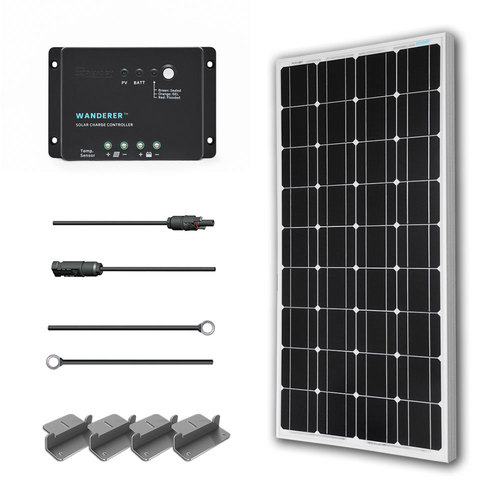
Renogy’s 100-watt Starter Kit, comes with the solar panel, charge controller, mounting hardware, and some wiring.
Check the price on Amazon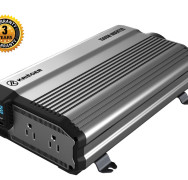
Krieger 1500 watt inverter (same size as Goal Zero’s above)
Check the price on AmazonPlus extra for additional wiring and fuses.
Adding all this up, our total expense is around $700, just 30% of the cost of the Goal Zero above, which has enjoys prettty much the same specs (100w panel, around 100AH battery, 1500 watt inverter).
Let’s say you’ve bought all the parts and now you have to put it together. You’re not exactly sure what to do! How do you store and transport your new solar system?
Well, you’ve got a few options:
- If your solar system powers the gadgets in your RV, van, or boat – you’ve already answered you own question. Store the battery and inverter in an out-of-the-way, safe place and strap that solar panel to your roof!
- If the solar panel is on your RV roof and you need to charge your batteries, you’ll have to park in the sun – not fun on a hot day. Instead, some people decide to simply store their solar panels inside, then pull them out and set them up next to the vehicle whenever they need a charge. This allows them to stay nice and cool parked in the shade, but maximize solar power at the same time!
- If you want your solar system to be truly portable, you’ll have to get creative about how you want to store it. Buy an old cooler and strap your battery and inverter inside, poke some vent holes, and bolt the solar panel to the outside. Voila! A poor man’s Goal Zero.
#3 DIY – piece everything together
DIY allows you to do two things: only buy exactly what you need and find them as cheaply as possible. Don’t need a 100w panel? Buy a 50w panel then! Need to be able to store more power? Buy a bigger battery. Are batteries too expensive? Buy a used one. When you put your own system together, your options are limitless.
Buying online, used, or through local stores allows you to search for the best prices. You can use Craigslist to find ultra-cheap used batteries and solar panels, cutting your total cost significantly. Some local solar companies will even sell their panels with cosmetic damage on Craigslist. This is a great way to get a perfectly functioning panel at very low cost.
If you go this route, just be sure to know exactly what you are looking for (and what can change), give yourself plenty of time to find the right pieces, and remember the wise words of Benjamin Franklin:
The bitterness of poor quality remains long after the sweetness of low price is forgotten.
Purchasing a small solar power system can be as easy or complex (read: cheap or expensive) as you want. Think carefully about your budget and how you plan to use your system before making any decisions!
Do you have a small solar system? Tell us about your setup and how you use it in the comments below!
Image Credit under CC License via Flickr – 1, 2, 3, 4, 5, 6, 7, 12

